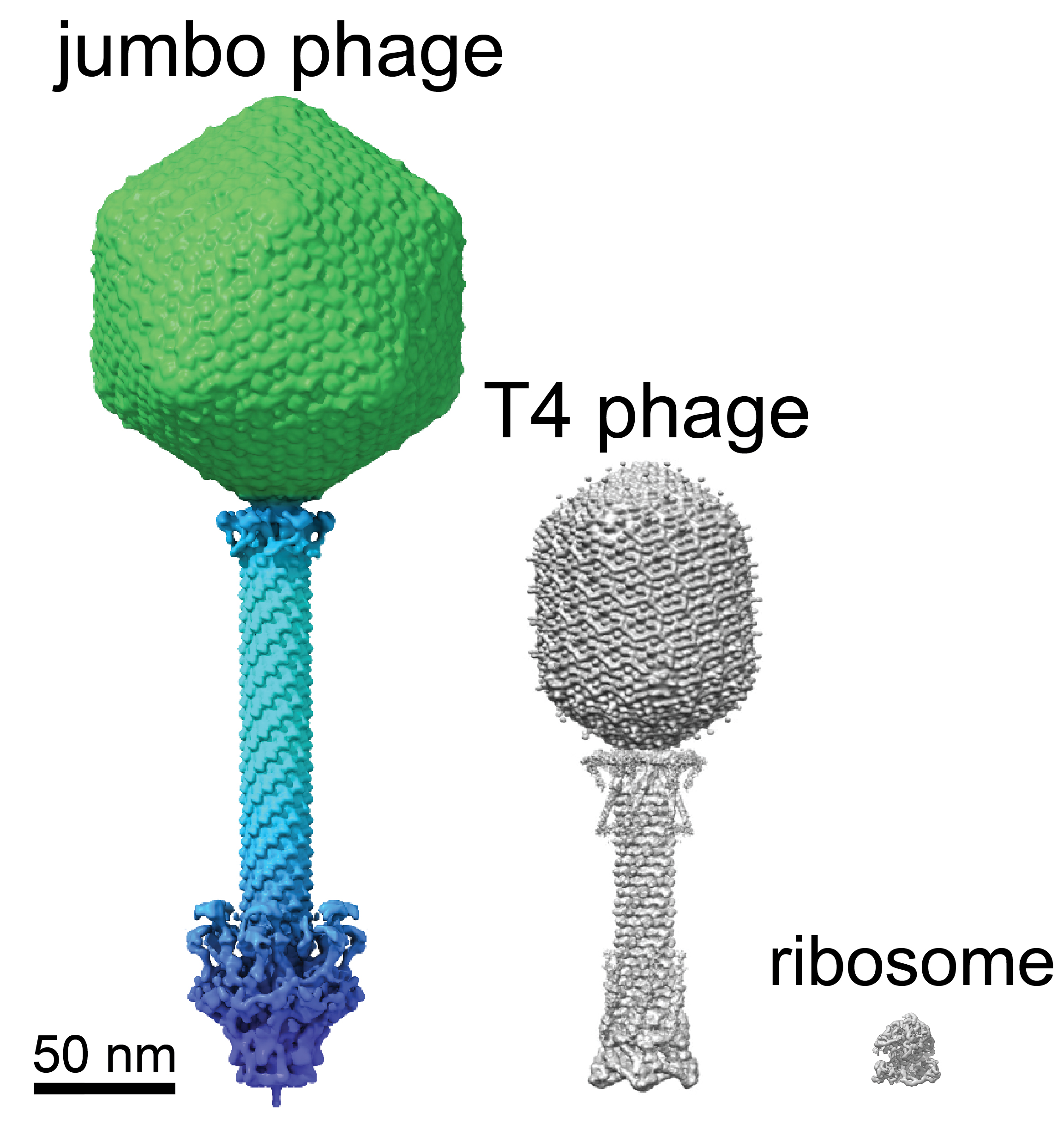Science
Related: About this forumGiant Viruses Called 'Jumbo Phages' Could Help Us Fight Antibiotic Resistance
TESSA KOUMOUNDOUROS8 AUGUST 2022
As antibiotic-resistant bacteria become increasingly challenging to defeat, consulting those who've been in battle with our ancient foe long before us just makes a whole lot of sense.
Viruses called bacteriophages have been clashing with bacteria since long before we even existed. So researchers from the University of California, San Diego, took a closer look at some of the lesser studied jumbo phages, specifically 201phi2-1, which infects Pseudomonas chlororaphis bacteria.
Named for their large genomes of over 200,000 base pairs long (most phages that infect Pseudomonas have genomes less than 100,000 base pairs), jumbo phages have an arsenal of techniques to counter bacterial defense mechanisms. Previously research found growing a shield around its genetic material was one of these tactics, making these viruses' life cycle unique.

Separation of genomic material from the rest of the cell contents by encasing it "was previously thought to have evolved only once in the history of life", molecular biologist Thomas Laughlin and colleagues write in their new paper. But it turns out these tiny giants beat us to it.
More:
https://www.sciencealert.com/strange-jumbo-phage-biology-may-help-us-to-tackle-antibiotic-resistant-bacterial
PortTack
(34,664 posts)Some Nerdy science person!!
PoindexterOglethorpe
(26,729 posts)Thank you for posting.
Red Pest
(288 posts)This research is fascinating and very well done; however, the popular science article in Science Alert that is referenced in the OP overstates some of the work. Yes, the phage encoded nuclear shell protein chimallen does appear to protect the phage DNA from CRISPR and not mentioned in the linked article, but in the Nature publication is the presence of pores that appear to allow phage mRNA to exit and be translated into phage protein by host ribosomes. Also the chimallen may be processed by a protease to enable phage capsids to dock on the shell surface for genome packaging. Further, this protein seems to be conserved in other jumbo phage. One question yet unanswered is how the phage DNA is protected after injection into the bacterial cytoplasm, but before the formation of the chimallen protein shell.
My criticism about overstatement comes from the mention of how this might be used to fight antibiotic resistance in bacteria. This might work, but bacteria have and will continue to rapidly evolve mechanisms that will allow them to be resistant to phage attack. The easiest one to evolve is the mutation of the phage receptor(s) on the host cell surface. There have been many studies that have demonstrated this. There is always a evolutionary war between host and parasite/virus/pathogen - one evolves a resistance and the other responds with a mutation that evades the resistance. This back and forth goes on as long as there are phage and bacterial hosts (or any predator-prey or host-pathogen).
I love microbiology! Which is why I continue to run a research lab, train graduate and undergraduate students, publish our results, and write more research grant proposals.
Finally, thank you to Judi Lynn for posting this and other articles.